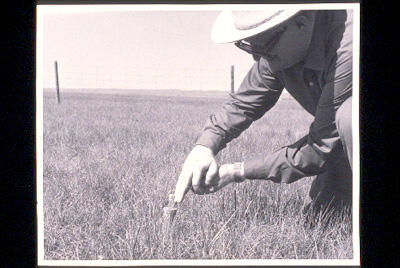
Title and statement of responsibility area
Title proper
Matador International Biological Program Research Station - R.T. Coupland
General material designation
- Graphic material
Parallel title
Other title information
Title statements of responsibility
Title notes
Level of description
Item
Reference code
Edition area
Edition statement
Edition statement of responsibility
Class of material specific details area
Statement of scale (cartographic)
Statement of projection (cartographic)
Statement of coordinates (cartographic)
Statement of scale (architectural)
Issuing jurisdiction and denomination (philatelic)
Dates of creation area
Date(s)
-
1969 (Creation)
Physical description area
Physical description
1 slide : b&w ; 3 x 2 cm
Publisher's series area
Title proper of publisher's series
Parallel titles of publisher's series
Other title information of publisher's series
Statement of responsibility relating to publisher's series
Numbering within publisher's series
Note on publisher's series
Archival description area
Name of creator
Custodial history
Scope and content
R.T. Coupland, Director of Matador Project (1966-1976) and professor of plant ecology, examines grain in a field.
Bio/Historical Note: From 1967 to 1972, plant ecologists at the University of Saskatchewan participated in the International Biological Program. As part of this worldwide study of agricultural productivity, ecologists established the Matador field station for grassland research carried out by scientists from thirty-four countries. The field station was located near Kyle, thirty miles north of Swift Current, in an area of natural grassland that was potentially the best wheat growing soil in the brown soil zone of Saskatchewan. The land (three square miles) was originally leased for 21 years from the Government of Saskatchewan; the lease (for $1/year) has since been renewed and currently expires in 2009. The Matador Project involved the study of the total grasslands ecosystem, including the interaction of animals, plants, microorganisms, soils and the atmosphere. Robert T. Coupland, Head of the Department of Plant Ecology, served as Director of the Matador Project.
Notes area
Physical condition
Immediate source of acquisition
Arrangement
Language of material
Script of material
Location of originals
Availability of other formats
Restrictions on access
Terms governing use, reproduction, and publication
Copyright: University of Saskatchewan
Other terms: Researchers are responsible for obtaining permission regarding reproductions.
Finding aids
Associated materials
Accruals
General note
From 1967 to 1972, plant ecologists at the University of Saskatchewan participated in the International Biological Program. As part of this worldwide study of agricultural productivity, ecologists established the Matador field station for grassland research carried out by scientists from thirty-four countries. The field station was located near Kyle, thirty miles north of Swift Current, in an area of natural grassland that was potentially the best wheat growing soil in the brown soil zone of Saskatchewan.
The land (three square miles) was originally leased for 21 years from the Government of Saskatchewan; the lease (for $1/year) has since been renewed and currently expires in 2009. The Matador Project involved the study of the total grasslands ecosystem, including the interaction of animals, plants, microorganisms, soils and the atmosphere. Robert T. Coupland, Head of the Department of Plant Ecology, served as Director of the Matador Project.

